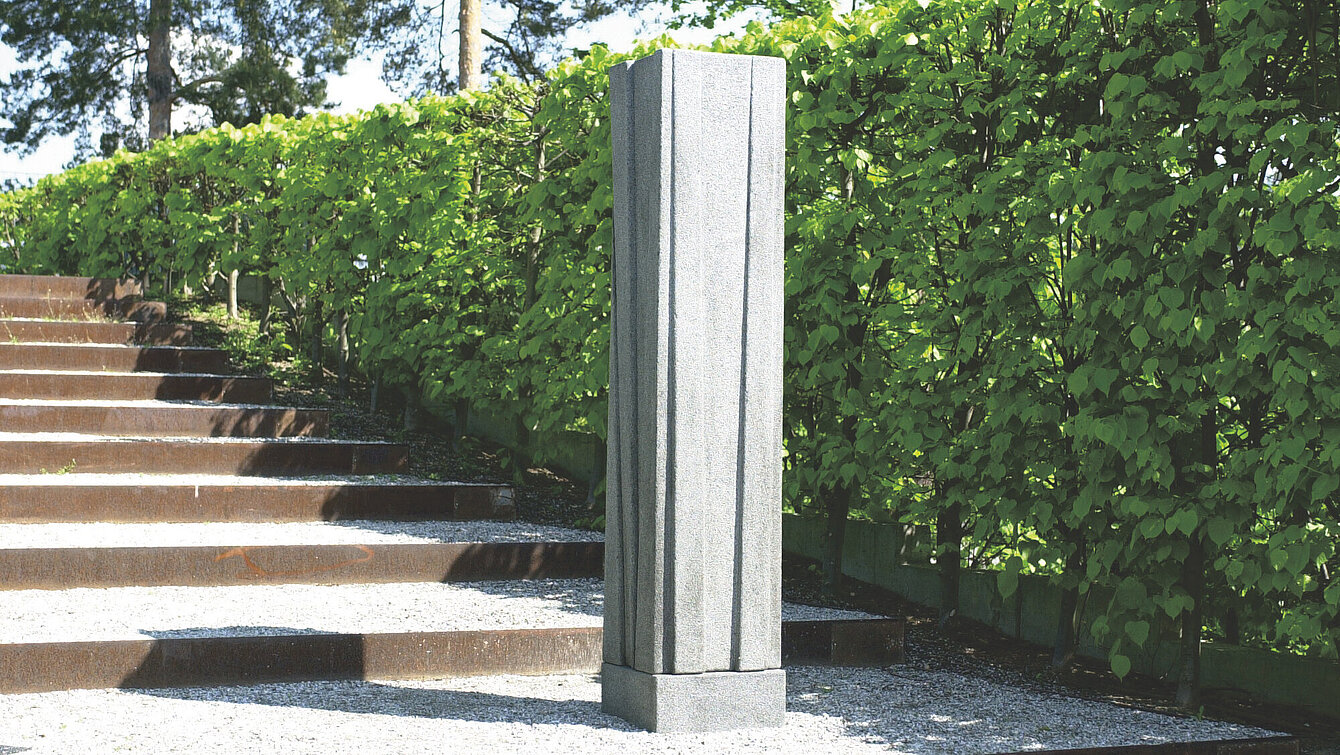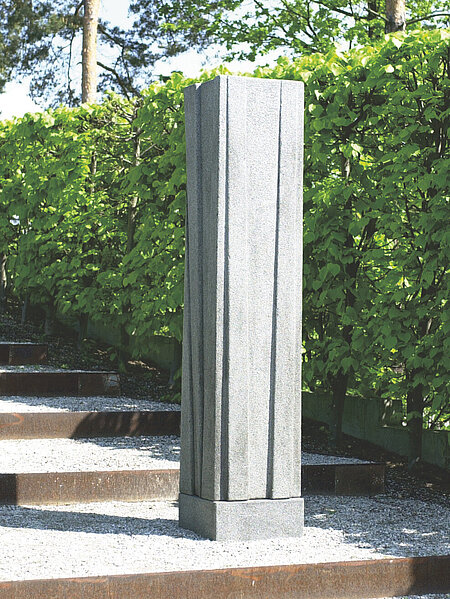In the mid-1950s, the Swiss sculptor Aeschbacher began a period of producing granite columns of around three metres high, which he called figures. Both this material and the human body, especially the female body, were essential elements for him. Typical of his figures are their slender, symmetrical sections, striving upwards along vertical axes and looking as though they were rubbing against each other. This creates an exciting interplay between dynamic movement and static qualities in the hard material, elegantly mastered by this self-taught artist.
Figur II
Hans Aeschbacher, 1955


Image Credits
Author
Walter Titz
Location on map
Owner
Museum Moderner Kunst, Stiftung Ludwig; Vienna
Artist biography
Show all
About the sculpture
One can clearly see his love for the material, the special structure of which was of particular importance for Hans Aeschbacher in designing each sculpture. The human, mainly female body is the second pivot in the sculptural work of the man from Zurich. This is why critics spoke of “moments of fertility, idols of the sanguine, signposts directing the way back to the first mother”.
Aeschbacher’s graphical work, too, is strongly coined by the theme of female shapes, the female torso. This is also the basis for Aeschbacher’s work exhibited in the Skulpturenpark, “Figur II”. In the mid 1950s, after a phase that was characterised by the use of lava as a material, the sculptor began an era of creating approximately three-metre-high granite columns, called “Figuren” by Aeschbacher. Their special characteristics are their slender, symmetrical parts striving upward along vertical axes, seemingly rubbing against one another. All in all, it is a group of works that is both compact and elegant, and of which "Figur II" from 1955 is an excellent example. It is a thrilling game of dynamics and static that is mastered elegantly and with confidence by the trained typographer and autodidact with his hard material.
On the other hand, Aeschbacher was a master in gaining most possible lightness and dematerialisation from the hard stone by means of spiral-like and technically very demanding openings. The sculptor also pursued the reduction of the bodily structure to skeleton-like structures in his work with concrete and Plexiglas. With the latter, he tried to also use the colours of light as means for the design.



















